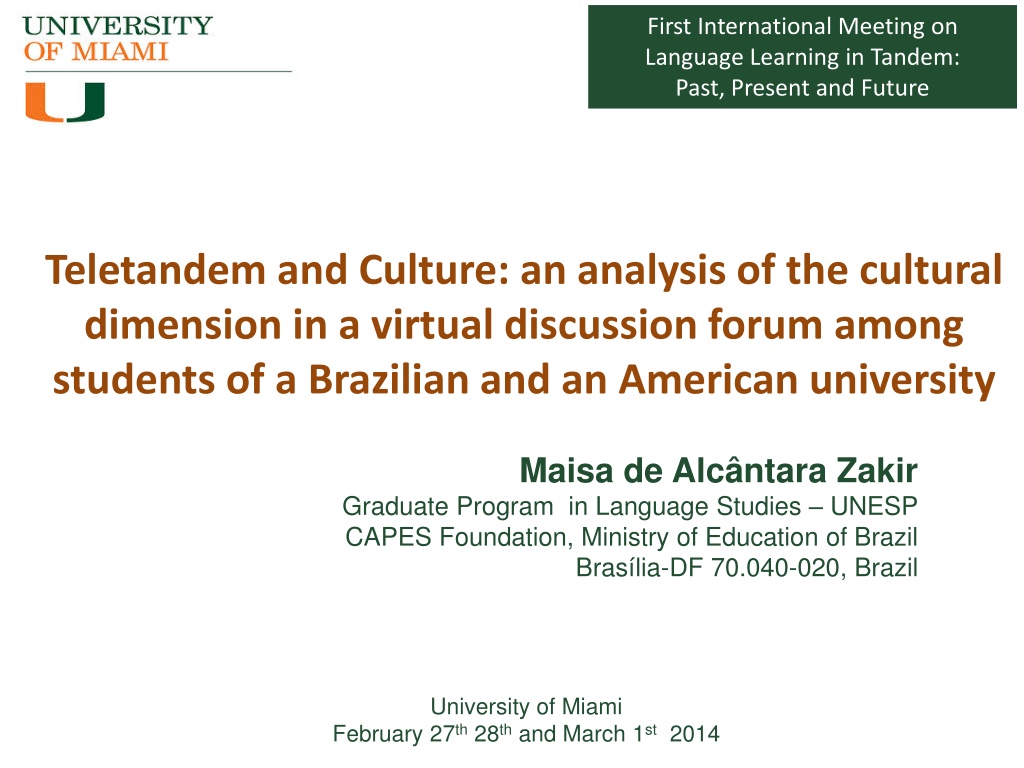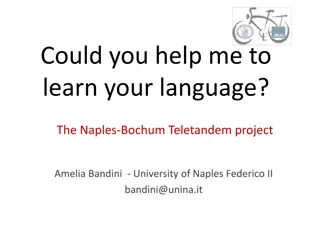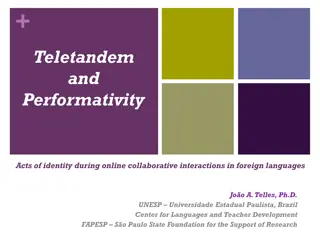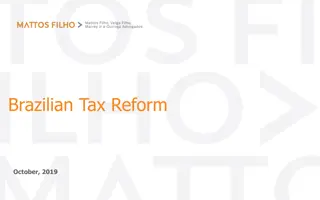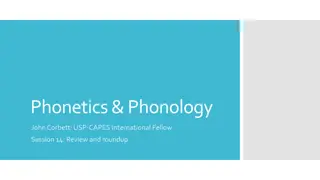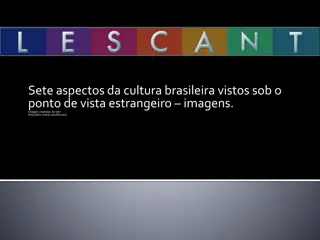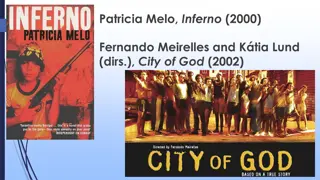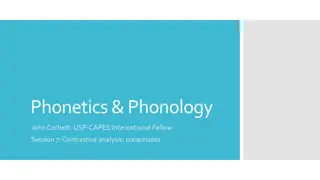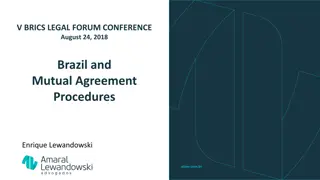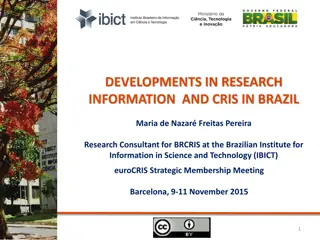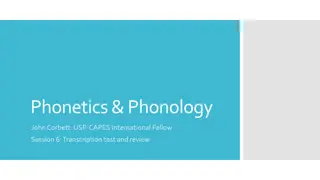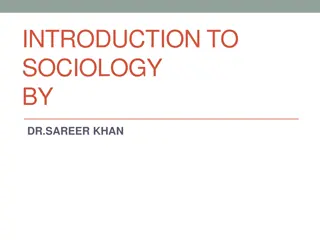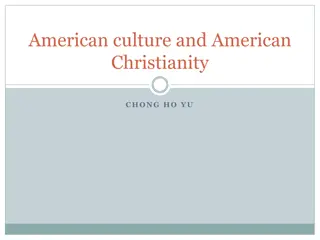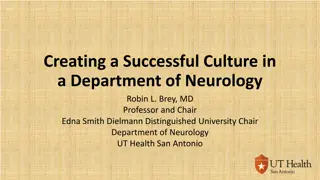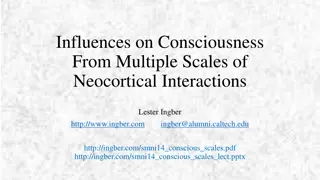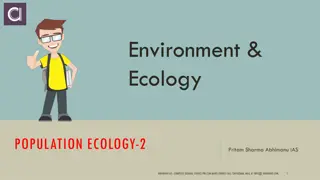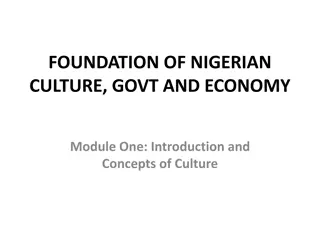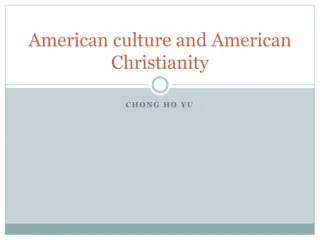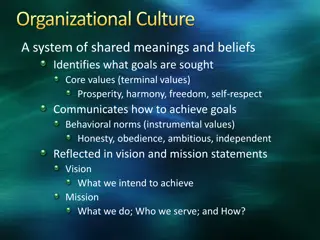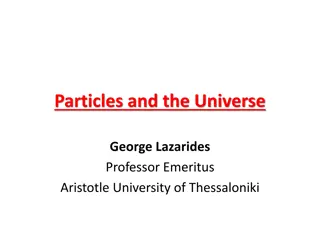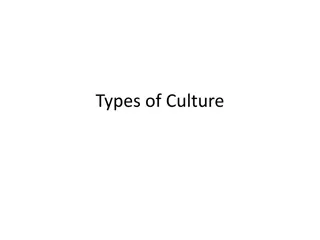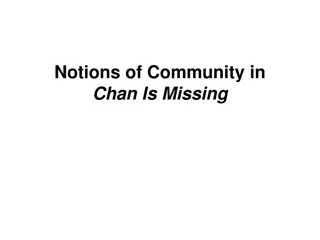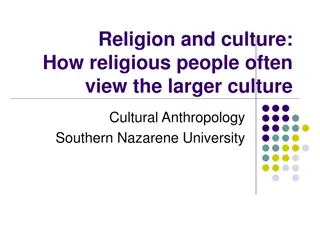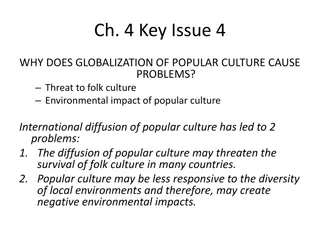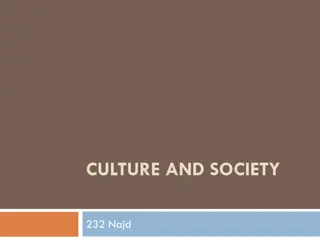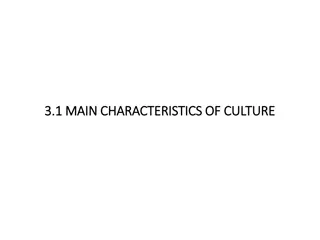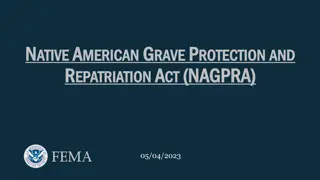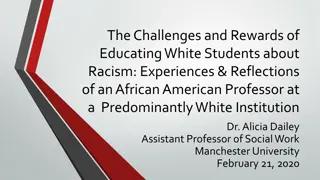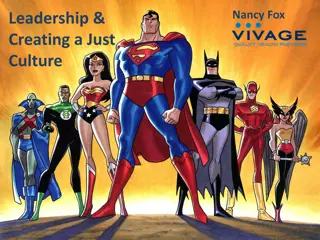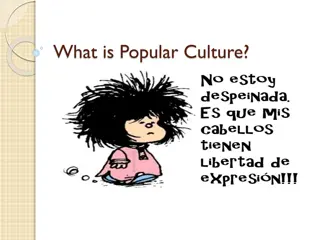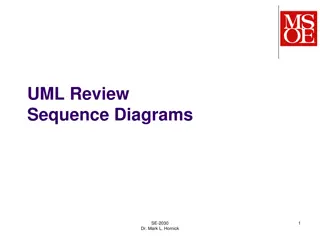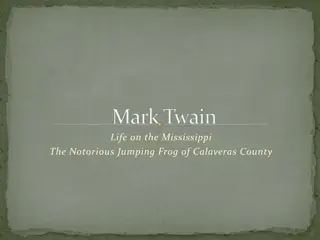Teletandem and Culture: Exploring Interactions Between Brazilian and American University Students
The research delves into the cultural dimensions of teletandem interactions among students from Brazilian and American universities, aiming to describe the impact on foreign language learning and cross-cultural understanding. Through dialogical discourse analysis and cultural episodes, the study explores the transformative experiences and challenges faced in virtual language exchange programs.
Uploaded on Oct 06, 2024 | 0 Views
Download Presentation

Please find below an Image/Link to download the presentation.
The content on the website is provided AS IS for your information and personal use only. It may not be sold, licensed, or shared on other websites without obtaining consent from the author. Download presentation by click this link. If you encounter any issues during the download, it is possible that the publisher has removed the file from their server.
E N D
Presentation Transcript
First International Meeting on Language Learning in Tandem: Past, Present and Future Teletandem and Culture: an analysis of the cultural dimension in a virtual discussion forum among students of a Brazilian and an American university Maisa de Alc ntara Zakir Graduate Program in Language Studies UNESP CAPES Foundation, Ministry of Education of Brazil Bras lia-DF 70.040-020, Brazil University of Miami February 27th 28th and March 1st 2014
Overview of the presentation FLTA Program: the beginning; The research context; Theoretical framework; Culture (Kramsch, 1998); Culture Related Episodes (ZHU, 2012; ZAKIR, FUNO & TELLES, forthcoming); Dialogical Discourse Analysis Principles (Brait, 2013; The culture dimensions (Levy, 2007) Excerpts of the discussion forum.
The beginning The FLTA Program (2009-2010): a transformative experience; More than 400 international students from 45 different countries; The Fulbright Conferences: First contacts with foreigners: cultural shock. The immersion experience: real X virtual Have you... have you been to the United States? Or traveled? No, never. But, I did teletandem before. Two times. With hum... a guy from Utah Oh, wow! And a guy from Miami. So I... Oh, very different! Yes, very different. And I really want to know Miami. I think it s... amazing, I don't know. Will and Gabi Spring Semester 2011
The research context - The scope of the project Teletandem and transculturality in on-line foreign language interactions via webcam; General research question: how can the cultural dimension of teletandem interactions in foreign languages be described? - Research topics (Telles, 2013) (1) Ways of understanding the study, the learning and the social use of foreign languages; (2) Ways of representing the culture of the teletandem partner and the impact of such understanding on the process of learning a foreign language and on the relationship with the partner; (3) the contribution of the cultural dimension of teletandem to the education of the learner to relate to other cultures; (4) The impact of the cultural dimension of teletandem on the different views of institutional implementation in the curriculum
The research context - Brazilian university: 14 students (pre-service language teachers; voluntary participation); - American university: 14 students (different majors; second semester of Portuguese; TT as part of the syllabus during the class); - 10 teletandem sessions, from which 5 were recorded (average 45 minutes long); - Twice a week (March to April 2012) - Written activities in the virtual platform Teleduc discussion forum
Posts 73 Mediators 14 Students of the AU 41 Students of the BU 18
The initial (ideal) hypothesis Teletandem as a context to promote and enrich the participants cultural knowledge / cultural experience a better understanding/ a wider perspective of the L2 culture. BUT is that what really happens?
Discussion forum 1. What aspects of your own culture have you highlighted (or would you highlight) to your partner during the teletandem sessions? Why? 2. What aspects of your partner s culture has s/he highlighted? What has changed in your perception about his/her culture because of the teletandem sessions?
Dialogical Discourse Analysis Principles Discourse as language in its concrete and live integrity (Bakhtin, 2008, p. 207) The issue of verbal interaction as constituting language transforms the enunciation act into a broad process, which takes into account both the relations between the interlocutors in the social scope and the context in which this enunciation is produced (BAKHTIN, 2004). The dialogism principle in Bakhtin s theory is given by the premise of the constitution of the self by the other (FLORES & TEIXEIRA, 2009, p. 163).
Dialogical Discourse Analysis The dialogical discourse theory is grounded on the the inseparable relation that exists between language(s), history and subjects (Brait, 2010). The theory implies a conception of language, construction and production of meaning necessarily grounded on the discursive relations among historically situated subjects. (p. 10).
Key elements in data analysis - DDA a) recognizing the multiplicity of discourses that constitute a text or a set of texts and that modify or subvert their relations due to the change(s) in the context(s) in which they are produced and received; b) the discourse, defined as dialogical relations, which is the object of an interdisciplinary subject that Bakhtin called metalinguistics or translinguistics starting point of the dialogical discourse analysis/theory; c) the theoretical-methodological assumption that the dialogical relations are established from the point of view of a historical, cultural and social subject; d) the dialogical relations are not ready and finished in a certain research object, but they are always established from a point of view that is shaped by values, ideologies, frontiers; e) the role of languages and subjects in the construction of meaning; f) the conception of text as signed by an individual ou colective subject that moves historical, social and cultural discourses. (BRAIT, 2013, p. 85).
A definition of culture In summary, culture can be defined as membership in a discourse community that shares a common social space and history, and common imaginings. (Kramsch, 1998, p. 10) Moreover, any one individual s experience of culture will be affected by the multiple aspects of their identity race, gender, sex, age, sexuality, class, caste position, religion, geography, and so forth and it is likely to alter in various circumstances. (Skelton & Allen, 1999, p. 4). Thus, culture is both a manifestation of a group, or a community, and of an individual s experience within it, or apart from it. As a group, members engage with one another in a shared social space. [ ] Recognising the perspective of the individual in relation to the group is key in developing a pedagogical approach. (Levy, 2007, p. 105)
LRE Language Related Episodes LRE Language Related Episodes are any part of a dialogue in which language students talk about the language they are producing, question their language themselves or others. (Swain & Lapkin, 1995, 1998). use, or correct
CRE Culture Related Episodes CRE when the spoken classroom discourse focuses on the collaborative construction understanding and cultural knowledge among the participants. (ZHU, 2012, p. 7). Culture-Related Episodes: moments of cultural CRE - Any part of a dialogue produced in the teletandem sessions in which the students focus on any interest, explanation or inquisitiveness about their own culture or the partner s (Zakir, Funo & Telles, forthcoming)
LEVY (2007) Culture dimensions 1. Culture as elemental; 2. Culture as relative; 3. Culture as group membership; 4. Culture as contested; 5. Culture as individual (variable and multiple).
1. Culture as elemental: the learner is no more a "blank slate" Sysoyev (2002, p. 510): learning of foreign culture does not start from an absolute zero By the time learners begin the study of a L2 context and its culture, they have already formed certain concepts, stereotypes, and expectations about L2 cultural realities. These expectations are not fixed and immutable. But they will influence the way learners comprehend and interpret a L2 culture (C2). Willis (1979, p. 186): We are therefore most deeply embedded in our culture ( ) we are in a very important sense, already, one step away from our real and living culture. Levy (2007): Pedagogical approaches and techniques that help learners to reflect objectively on their own culture are especially important because language teachers and learners need to be sharply aware of their point of departure in culture learning. (p. 107)
2. Culture as relative: culture is, fundamentally, a relative concept, not an absolute one. Lo Bianco e Crozet (2003) Making generalisations is central in this approach: in other words the belief that what we do and what they do is common to all, across the two respective cultures being compared. Guest (2002, p. 154) identifies a number of problems associated with a contrastive approach in learning and teaching the second culture (C2), and a paraphrased list of problems such as oversimplification which leads to "caricature" rather than a deeper understanding. Levy (2007, p. 108) In essence Guest is recommending a move away from the learner as detached observer towards the learner as active participant in culture learning, and from a view of culture which is static and distant, to a view which is more , dynamic and directly engaged. This level and kind of contact becomes more feasible and practical with new technologies, especially synchronous forms of communication such as chat .
3. Culture as group membership: Lindsay, Robins and Terrell (1999, p. 26-27): Culture is everything you believe and everything you do that enables you to identify with people who are like you and that distinguishes you from people who differ from you. Culture is about groupness . Baldwin, Faulkner & Hecht (2006, p. 17): A group perspective on culture draws attention to the idea of membership and community and leads to questions such as how people identify with groups, how others identify people with groups and how different groups relate and interact with one another.
3. Culture as group membership: Hymes (1974, p. 51): Culture is understood as a "speech community": a group sharing knowledge of rules for the conduct and interpretation of speech . Levy (2007): Online groups, and the digital cultures that result provide new venues for groups and communities to be created and maintained (see Kim, 2000). Online groups require us to revisit questions of identity, membership and community and the ways in which individuals become members of such groups, and how their messages contribute to the group s identity and culture(p. 109).
4. Culture as contested: Culture is contested at many levels: from individual (cultural shock when someone goes abroad) to a broader scale (media). Giroux (1988, p. 171) : the representation of lived experiences, material artefacts, and practices forged within the unequal and dialectical relations that different groups establish in a given society at a particular historical point. In this case, culture is closely related to the dynamics of power and produces asymmetries in the ability of individuals and groups to define and achieve their goals. Furthermore culture is also an arena of struggle and contradiction, and there is no one culture in the homogeneous sense. On the contrary, there are dominant and subordinate cultures that express different interests and operate from different and unequal terrains of power . (p. 110)
5. Culture as individual (variable and multiple) Robins, 2005; Terracciano et al., 2005: What we call our own culture is incomplete and fragmentary (p. 111) The teacher s and the learner s understanding of their own culture (C1) will inevitably be an individual interpretation, modified by such factors as world knowledge, experience living abroad, political awareness and so forth (p. 111) If we can say nothing with any certainty about cultures as whole and have to rely on helping the learner develop individual perceptions, the individual is going to acquire a very incomplete and idyosincratic view of the C2. What one learner will come to understand or learn when observing or engaging in a cultural exchange, another may not (p. 111).
Culture as elemental Ra ssa spoke with me about music festivals, things that she likes to do in her city, and the differences between her college city and her hometown. I hadn t realized that metal and hard rock were as popular as they are in Brazil. (Phillip, A, 04/09/12) My skype partner Daniela is very studious and is working hard to earn her degree. Although one thing that did surprise me a little bit was that she wasn t a big soccer fan. Especially since she lives in Sao Paulo, home of the 2011 champions Corithians. (Vincent, A 04/12/12)
Culture as relative Durante as ses es que tive at agora tentamos abordar um pouco da express es que utilizamos no nosso dia a dia sempre comparando a de um pais com o outro, tamb m falamos sobre as musicas, eles acreditam que todo brasileiro gosta de samba, mas n s brasileiros sabemos que n o assim...e o teletandem desta forma vira uma boa oportunidade de explicarmos e mostrarmos para eles que o Brasil e repleto de culturas diferentes e h muita coisa boa que eles ainda n o conhecem sobre nosso pa s. (Denise, B, 03/28/12) Hoje, especificamente, destacamos sobre a nossa cultura, os sotaques de diferentes regi es brasileiras e os modos de os brasileiros fazerem piadas com as diferen as entre sotaques cariocas e paulistas, por exemplo. Tamb m destaquei o estilo de vida de cada cidade como, por exemplo, baianos tranquilos e paulistas estressados. Meu parceiro tamb m destacou o estilo de vida da sua cidade, Valencia - Espanha, e falou tamb m da mania de os Americanos de Nova York serem agitados tamb m assim como S o Paulo e me contou que ficou impressionada de ver tantas lanchonetes que vendem caf por esquina. (Alice, B, 03/28/12)
Culture as group membership When we spoke about Easter and Good Friday I realized that we are not so different in how we celebrate these holidays. I think it is very similar to Hispanic culture than American culture because I was raised in a Hispanic way and we have a lot of similarities. (Ashley, A, 04/23/12) Realmente, quando Denise e eu falamos da cultura e das costumes de nossos pa ses podemos que eles t m muitas coisas em comum a n vel geral (eu n o sou muito da cultura americana, agora estou come ando a saber mais, mas acho que Brasil muito mais parecido Espanha que aos Estados Unidos). (Olga, A, 04/13/12) Eu concordo com voc quando fala sobre as semelhan as nos dois pa ses, eu tamb m achei muitas semelhan as, tal vez porque eu sou hispana. Eu encontrei interessante que muitas das costumes brasileiras, como comemorar os quinze anos das meninas, s o muitos parecidas s dos hispanos. (Hannah, 05/04/2012)
Culture as contested Os aspectos do povo brasileiro que eu acredito importantes seriam o nosso estilo de vida, o nosso sorriso mesmo em situa es extremas, nossa vontade em conhecer outras culturas. E o que ficou evidente como mudan a, na minha vis o da cultura deles, o fato de que eles tamb m t m interesse em outras culturas, eles tamb m t m curiosidades. E esse contato para o aprendizado da l ngua muito importante, pois al m da necessidade imediata em usar a l ngua, tamb m ganhamos conhecimentos culturais, e melhor podemos difundir o que somos, al m do futebol e do Rio. ( sis, B, 03/28/12) Voc pode descrever como o povo brasileiro tem um sorriso mesmo em situa es extremas? Acho que este muito diferente do que os aspectos do povo americano. Acho que as pessoas americanas raramente est o sorrindo (Carl, 04/06/12)
Culture as individual Tamb m quero mencionar que nos estamos falando com s um amostra das pessoas nosso pa ses. Eu acho que temos que lembrar que nosso parceiro n o representa toda a popula o brasileira. Al m deste eu adoro que eu e minha parceira podemos nos entender ainda que somos de diferentes pa ses. (Hannah, A, 04/05/12)
Final remarks Culture dimensions: variable and dynamic; Teletandem interaction(s): a context to reflect about culture and CALL; Mediation sessions after teletandem interactions: a context to rethink language teachers education and the role of foreign language and culture exchanges.
Uma cultura estrangeira no se revela em sua completude e em sua profundidade a n o ser atrav s do olhar de uma outra cultura (e ela n o se revela nunca em toda sua plenitude, pois outras culturas vir o e poder o ver e compreender mais ainda). (...) Face a uma cultura estrangeira, colocamos perguntas novas que ela mesma n o se colocava. Procuramos nelas uma resposta a essas quest es que s os as nossas, e a cultura estrangeira nos responde, nos desvelando seus aspectos novos, suas profundidades novas de sentido. Se n o colocamos nossas pr prias quest es, nos desligamos de uma compreens o ativa de tudo que outro e estrangeiro (trata-se, bem entendido, de quest es s rias, verdadeiras). (Amorim, 2006, apud De Paula, 2013).
Thank you! maisazakir@gmail.com
References ARANHA, S; CAVARALI, S. M. S. A trajet ria do projeto Teletandem Brasil: da modalidade institucional n o-integrada institucional integrada. Horizontes em Lingu stica Aplicada. Bras lia. (no prelo). BAKHTIN, M. Marxismo e filosofia da linguagem. 11. ed. Trad. Michel Lahud e Yara Frateschi Vieira. S o Paulo: Hucitec, 2004. ______. Problemas da po tica de Dostoi vski. 4. ed. Trad. Paulo Bezerra. Rio de Janeiro: Forense Universit ria, 2008. BRAIT, B. An lise e teoria do discurso. In: ______ (Org.). Bakhtin outros conceitos-chave. S o Paulo: Contexto, 2010. BRAIT, B. Constru o coletiva da perspectiva dial gica - Hist ria e alcance te rico-metodol gico. In: FIGARO, R. (Org.). Comunica o e an lise do discurso. S o Paulo: Contexto, 2013. FLORES, V. N.; TEIXEIRA, M. Bakhtiniana, S o Paulo, v. 1, n. 2, p. 143-1634, 2 sem. 2009. Dispon vel em: <http://revistas.pucsp.br/index.php/bakhtiniana/issue/view/236/showToc>. Acesso em: 02 setembro 2011. KRAMSCH, C. Context and culture in language teaching. Oxford: OYP, 1993. ______. Language and Culture. Oxford UniversityPress Oxford, 1998. LEVY, M. Culture, Culture Learning and New Technologies: Towards a pedagogicalframework. Language Learning & Technology, v. 11, n. 2, 2007, p. 104-127. Dispon vel em: <http://llt.msu.edu/vol11num2/levy/>. Acesso em: 13 julho 2011. SWAIN, M.; LAPKIN, S. Interaction and second language learning: Two adolescent French immersion students working together. Modern Language Journal, v. 82, 1998, p. 320-337. TELLES, J.A. Projeto Teletandem Brasil: L nguas Estrangeiras para Todos Ensinando e Aprendendo l nguas estrangeiras in-tandem via MSN Messenger. Faculdade de Ci ncias e Letras de Assis, UNESP. 2006. Dispon vel em: <http://www.teletandembrasil.org/site/docs/TELETANDEM_BRASIL_completo.pdf>. Acesso em: 02 setembro 2010. ______. Teletandem e Transculturalidade na intera o on-line em l nguas estrangeiras por webcam. Projeto de pesquisa financiado pela FAPESP, 2011 (in mimeo). WELSCH, W. Transculturality: the puzzling form of cultures today. CaliforniaSociologist, 17 & 18, 1999, p. 19-39. Dispon vel em: <http://www2.uni- jena.de/welsch/Papers/transcultSociety.html> Acesso em 08 julho 2011. ZHU, J. Weaving language and culture together: the process of culture learning in a chinese as a foreign language classroom.2012. 456 f. Tese (Doutorado em SecondLanguage Acquisiton), Graduate Collegeof the Universityof Iowa, Iowa City, 2012. ZAKIR, M. A.; FUNO, L. B. A.; TELLES, J. A. Epis dios relacionados a cultura em teletandem: uma an lise de intera o entre uma aluna brasileira e um aluno estadunidense. (em prepara o).
